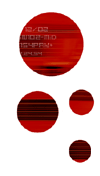

 |
 |
scientific program electroacoustic musics around set theory music analysis tools musicnetwork workshop professional week ircam forum workshops free software for music international multichannel sound forum performing arts and technologies dance and new technologies access to sound heritage thematic evenings demonstration stands artistic program set theory concert music in creation concert cursus concerts opera "one" sound installations open house weekend technologies gallery conferences demonstrations workshop-performances workshops and films ircam laboratories linux install-party concert distribution on internet associated events resonances night at glaz'art émilie simon at la cigale suguru goto reseaunances guided tours of ircam and the multimedia library resonances in pictures resonances 2002 
|
JEAN-PIERRE CHOLLETONComputer tool and compositional process : some aspects of the music of Magnus LindbergAbstractSince Kraft for soloist ensemble and grand orchestra until more recent works (Concerto pour clarinette, Chorale), Magnus Lindberg created personal, quite voluminous, software including different layers of representative functions of its stylistic evolution during the last years. As a kind of permanent work in progress, this network of procedures and algorithms is like a labyrinth for the reckless musicologist willing to venture. Such an approach allows in the meantime to understand better how the formalization of musical ideas, in a personalized computer environment influenced the composer's style and what has been the feed-back of those procedures in his instrumental writing. Most of the compositions of Magnus Lindberg, up till Corrente, are based on principles of engendering and transformation of the material, based on interpolation techniques. One calculates a given number of intermediary chords between two reference chords. The idea is to go progressively from harmonic qualities of the first one to the second one following a determined curve. In the meantime interpolation cannot be created in the instrumental domain without a control of the harmonic qualities of intermediary steps. In order to have a system of classification and control of his harmonic material, in his program, Magnus Lindberg formalized based on pitch-class set theory developed by Allen Forte. This theory is mainly related to the analysis of atonal music. It is used within the framework of the personal program of the composer, not that much for his theoretical aspect as a rather practical method, from a technological computer point of view, of classification of analyzed chords. On the other hand, it allows the control of harmonic quality of intermediary chords of an interpolation in the domain of pitches. This presentation will allow to see in what computer methods used by Magnus Lindberg are representative for his musical preoccupations and how, in return, they can be the source of the enlargement of his thinking and his conceptions in the domain of composition, by creating that way an appropriateness between the computer tool and the compositional process. |
|||||||||||||||||||||||||||||||
 |
Organization Committee Copyright Ircam-Centre Pompidou 2003 |